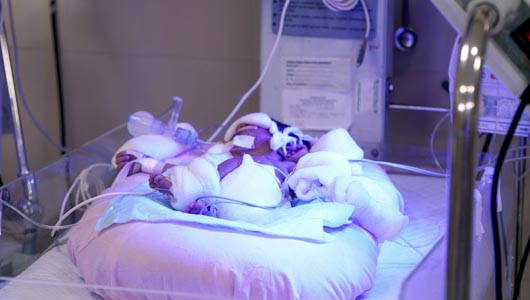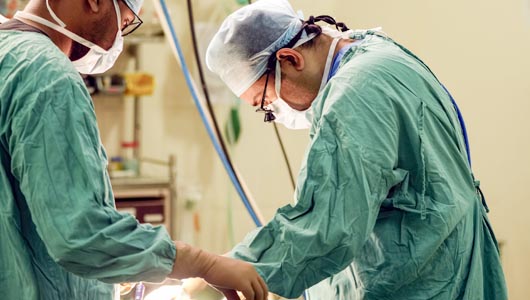
Pediatric Surgery
Pediatric Surgery is a subspecialty of surgery that deals with the surgical treatment of fetuses, infants, children, adolescents and young adults. In other words Pediatric Surgeons treat children from birth through late adolescence. Their medical practice covers symptoms, diagnosis, staging, treatment, prognosis and follow-up efforts.
Our Team

Dr. Yasir Ahmad Lone
Associate Professor

Dr. Aisha Naaz
Assistant Professor
Treatment available
- Appendectomy : This is an emergency surgery for removal of infected appendix.
- Antegrade Colonic Enema : This procedure is conducted to free the bowels of feces.
- Central Venous Port and Catheter Placement : CVC is a tube that is put through the vein in the arm or chest and ends in the atriumor right part of the heart. If the catheter is placed in the chest, it is attached to a device called port under the skin.
- Cholecystectomy (Gallbladder Removal) : This is a surgical procedure conducted to remove the gallbladder which collects and stores bile/digestive fluid produced in the liver.
- Circumcision : The procedure is conducted to remove the foreskin from the human penis.
- Esophagoscopy : This is a tube or instrument fitted with a light and lens for viewing. It is also used as a tool to extract tissue that is checked under a microscope for disease.
- Fundoplication : This is a surgical procedure to treat gastroesophageal reflux disease and hiatal hernia.
- Frenulectomy : This is a simple procedure in which the doctor severs the frenulum (a bridge of tissue that connects the foreskin with head of penis) and makes it free for movement.


- Gastroschisis Repair : This is a procedure done on an infant to correct a birth defect that that may have created an opening in the skin and muscles covering the abdominal wall.
- Hydrocele Repair : This is a surgery done to correct the swelling of the scrotum that occurs when fluid collects around the testicle (hydroceles).
- Lymph Node Biopsy : This is a type of biopsy that involves inserting a needle into a lymph node to reach out to tissue for examination under a microscope.
- Pyloromyotomy : In this procedure the surgeon makes an incision on the wall of the pylorus to treat pyloric stenosis. Pyloric is that part of the stomach that connects with the duodenum. Pyloric Stenosis is a condition in which food is blocked from entering the small intestine.
- Splenectomy : This is a surgical procedure done to remove the spleen.
- Splenic Cyst : The spleen is an organ in the belly that helps filter the blood. A splenic cyst is a fluid-filled structure in the spleen of the baby. This cyst may press the adjoining organs. Typically these do not require treatment to begin with, but may require a procedure.
- Splenopexy for Wandering Spleen : This involves encircling the spleen with a mesh to preserve its splenic function. It can be performed laproscopically.
- Trauma Surgery : This is a surgical specialty that makes use of both operative and non-operative management to treat traumatic injuries.
- Wound Care : This involves all stages of wound management, including diagnosing, healing, treatment and management.

